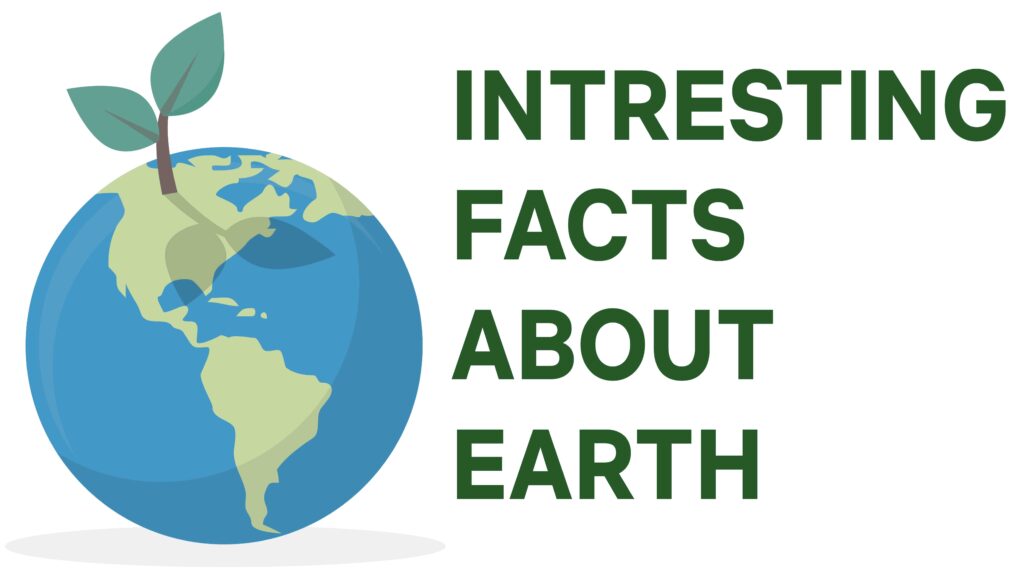On April 22 every year, we celebrate Earth Day. It began in 1970 to show Earth’s problems and make people care about saving it. But shouldn’t we care about Earth every day? We just have one amazing planet. Here’s a list of 10 cool facts about it.

Earth, our home in the vastness of space, holds remarkable secrets and features that continue to captivate our curiosity. Let’s delve into some intriguing facts about our planet that highlight its uniqueness and significance.
1. Earth’s Unique Shape
Contrary to the notion of a perfect sphere, Earth isn’t quite round. Its spin causes a bulge at the equator and flatten at the poles. The uneven mass distribution also causes subtle changes in gravity. While it appears round in space photos, Earth’s true shape is its ‘geoid,’ resembling its sea-level surface. This is depicted in the detailed gravity map created by ESA’s Gravity and Steady-State Ocean Circulation Explorer (GOCE).
2. Coral Reefs: Massive Living Structures
Beneath the ocean’s surface, coral reefs are vibrant ecosystems. These living structures, constructed by tiny coral polyps over time, are Earth’s largest. They’re vital for ocean life, offering shelter and protection. However, factors like ocean acidification and warming threaten their existence, highlighting the importance of safeguarding these underwater wonders.
3. Earth’s Squishy Interior
Earth’s interior isn’t rigid; it’s semi-solid due to high heat and pressure. This characteristic enables geological processes like plate tectonics and volcanic activity. An intriguing outcome is a post-glacial rebound, where land slowly rises after ice melts. This phenomenon, observed in places like Canada and Antarctica, gives insight into Earth’s deep workings.
4. Antarctica’s Icy Dominion
Antarctica, the coldest and windiest place on Earth, boasts the planet’s largest ice sheet. This colossal ice reserve, exceeding 70% of freshwater and 90% of ice, has a substantial influence on sea levels and ocean currents. Satellite data, such as ESA’s CryoSat, aids in monitoring this crucial ice sheet and understanding climate impacts.
5. The Moon’s Drift
Surprisingly, the Moon is drifting away from Earth at about 4 cm per year due to tidal forces. Over millions of years, this slow separation impacts Earth’s rotation. Scientists believe the Moon was formed from material ejected by a colossal collision with Earth, explaining similarities in their rocks.
6. Atacama: Earth’s Driest Desert
The Atacama Desert in South America, receiving minimal rainfall, is the driest place on Earth outside Antarctica’s dry valleys. The unique climate results from factors like mountain rain shadows and cold currents. Despite its aridity, the Atacama hosts resilient life forms and offers striking landscapes.
7. Shifting Magnetic Pole
Earth’s magnetic north isn’t fixed; it moves over time. Recently, it’s racing toward Siberia due to shifts in the magnetic field deep within Earth. This movement, detected by ESA’s Swarm mission, underscores our ongoing understanding of our planet’s magnetic behavior.
8. Europe’s Urban Landscape
Although Europe is small in size, it boasts a substantial population of over 746 million people. Its high urbanization rate necessitates addressing challenges like unplanned growth, pollution, and resource management. ESA’s World Settlement Footprint, a dataset produced with Copernicus Sentinel satellites, aids in studying urbanization’s global impact.
9. Tibetan Plateau: ‘Third Pole’
Holding vast freshwater reserves, the Tibetan Plateau is dubbed the ‘third pole.’ Its glaciers feed vital rivers, but they’re endangered by climate change. Understanding their changes, like underestimated ice loss, is essential for water resource management.
10. Trees: Climate Regulators
Forests, covering around 30% of Earth’s land, play a pivotal role in climate regulation. They absorb carbon dioxide and provide oxygen, combating climate change. However, deforestation and degradation release stored carbon. ESA’s Biomass mission aims to quantify forests’ carbon storage, aiding conservation efforts.
In appreciating these extraordinary Earth facts, we deepen our awareness of the planet’s intricate workings and the need to protect and sustain its beauty and diversity for generations to come.
Also Read: 15 Weird And Interesting Facts About The Human Body






